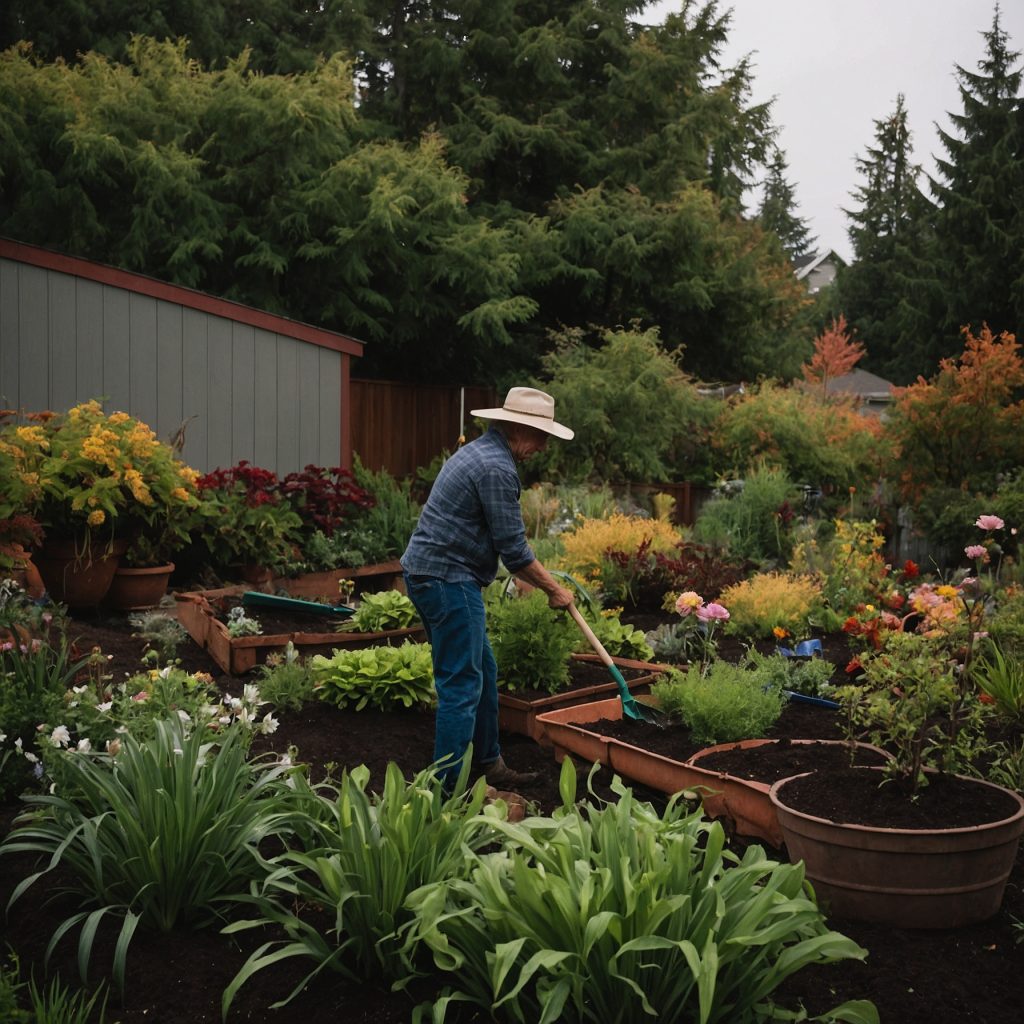September Gardening Tasks in Gig Harbor, Washington
As the warm days of summer give way to the cooler, crisper air of autumn, September marks a significant transition period for gardeners in the Gig Harbor, Washington area. Located in the Pacific Northwest, Gig Harbor’s unique climate provides the perfect environment for a variety of plants, but it also requires some specific gardening tasks to ensure your garden remains healthy and vibrant as the seasons change.
- Harvesting Late Summer Crops
September is the time to reap the rewards of your summer garden. Tomatoes, peppers, cucumbers, and beans are often still producing, and it’s crucial to keep harvesting them to encourage continued growth until the first frost. This is also the time to pick late-season fruits like apples, pears, and plums.
– Tip: Regularly check your plants for ripe produce, and be sure to remove any fallen fruits or vegetables to prevent pests.
- Planting Cool-Season Vegetables
With the cooler weather, you can start planting a new round of crops that thrive in fall temperatures. Consider planting leafy greens like spinach, lettuce, and kale, as well as root vegetables like carrots and radishes. These crops can be sown directly into the garden or started indoors for transplanting later.
– Tip: Use row covers to protect young seedlings from unexpected cold snaps or pests.
- 3. Preparing the Soil for Fall
September is an excellent time to prepare your soil for the upcoming cooler months. Add compost or well-rotted manure to enrich the soil and improve its structure. This is also a good time to test your soil’s pH levels and make any necessary adjustments.
– Tip: Consider planting cover crops such as clover or rye to add nutrients back into the soil and prevent erosion during the winter months.
- Dividing Perennials
As the growing season winds down, many perennials can be divided to promote healthier growth and prevent overcrowding. Hostas, daylilies, and irises are just a few examples of plants that benefit from division in the fall. Dividing perennials also allows you to spread your favorite plants to other areas of your garden or share them with friends.
– Tip: After dividing, replant the sections immediately, and water them thoroughly to help them establish roots before winter.
- Planting Spring-Flowering Bulbs
September is the perfect time to plant spring-flowering bulbs such as tulips, daffodils, and crocuses. These bulbs need the cold winter months to develop and will reward you with a burst of color when spring arrives. Be sure to plant bulbs in well-draining soil and at the correct depth.
– Tip: Plant bulbs in groups or clusters for a more natural look and to maximize their visual impact in your garden.
- Pruning and Cleaning Up
Pruning and general garden cleanup are essential tasks in September. Remove any dead or diseased plant material to prevent overwintering pests and diseases. Cut back perennials that have finished blooming, and trim shrubs to maintain their shape. However, avoid heavy pruning of trees and shrubs as this can stimulate new growth that might not harden off before winter.
– Tip: Use the removed plant material to start a compost pile that will break down over the winter and be ready to use in the spring.
- Lawn Care
Early fall is a critical time for lawn care in Gig Harbor. Aerate your lawn to relieve soil compaction and allow air, water, and nutrients to reach the roots more effectively. This is also the time to overseed your lawn with cool-season grasses and apply a slow-release fertilizer to promote healthy growth.
– Tip: Keep mowing your lawn as needed, but gradually lower the cutting height to prevent the grass from becoming too long over winter.
- Watering Adjustments
As temperatures drop, it’s important to adjust your watering schedule. Overwatering can lead to root rot and other issues as plants require less water in cooler weather. Monitor your garden’s moisture levels and water deeply but less frequently.
– Tip: Consider investing in a rain gauge or soil moisture sensor to help you determine when your garden needs water.
- Planning for Next Year
September is also a great time to reflect on the successes and challenges of your current garden and start planning for next year. Make notes about which plants thrived, which struggled, and any changes you’d like to make to your garden design or plant selection.
– Tip: Visit local nurseries or garden centers to take advantage of end-of-season sales on tools, plants, and other garden supplies.
Conclusion
September gardening in Gig Harbor is all about preparation and transition. By focusing on these tasks, you’ll not only keep your garden looking beautiful through the fall but also set it up for success in the coming year. Embrace the changing season and enjoy the quieter, more reflective time in your garden as you prepare for the winter ahead. Call Levy’s Lawns and Landscaping at (360) 876-6567
